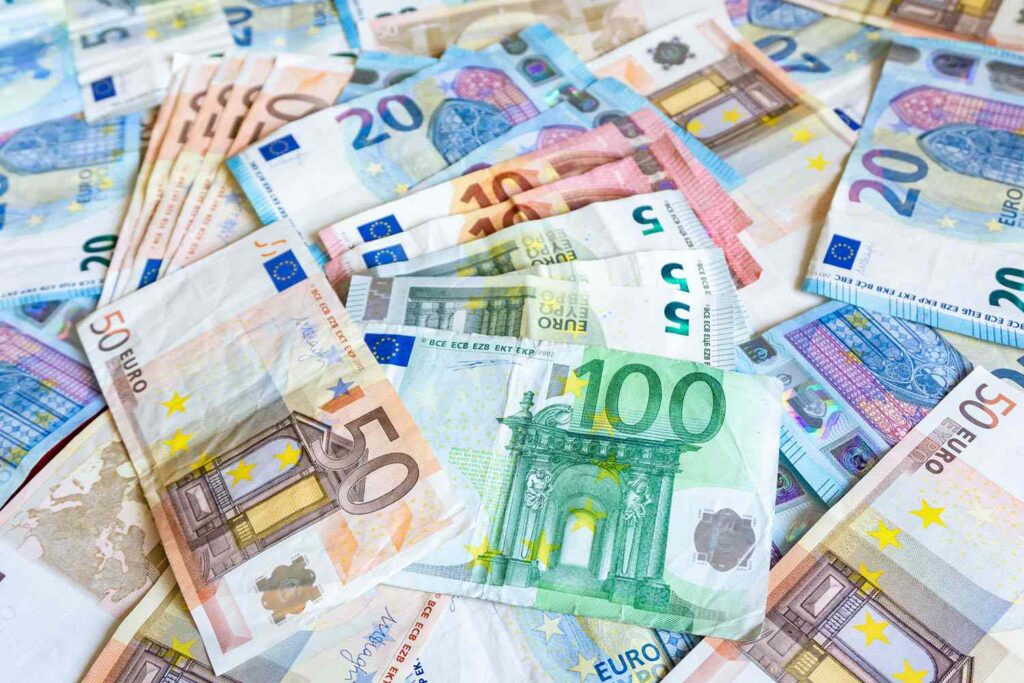Euro’s Decline In recent European trade, the Euro experienced its sixth consecutive loss against the US Dollar, reaching a six-month low. This downward spiral has sparked concerns about a growing interest rate gap that favors the United States over the Eurozone.
The ECB’s Restrictive Interest Rates
The European Central Bank (ECB) recently announced that interest rates have reached restrictive levels. This decision was met with apprehension from financial markets, especially considering the Federal Reserve’s hints at another interest rate hike in the US later this year.
Euro’s Decline EUR/USD Exchange Rate
The EUR/USD exchange rate fell by 0.2% during the trading session, reaching 1.0570, the lowest point since March. The session’s high briefly touched 1.0596. This loss marked the fifth consecutive drop, which can be attributed to ECB President Christine Lagarde’s testimony before Parliament and a surge in US treasury yields.
Euro’s Decline Lagarde’s Economic Assessment
Euro’s Decline During her testimony, Lagarde highlighted recent economic indicators that revealed weakness in the Eurozone’s economy during the third quarter of the year. Furthermore, she stated that inflation in the Eurozone is expected to decrease further, though it is likely to remain elevated for an extended period.
Lagarde emphasized that the current interest rates are instrumental in achieving the ECB’s inflation target of 2% in the medium term. The ECB will continue to rely on new data to determine its future course of action regarding interest rates.
The Widening Interest Rate Gap
The interest rate gap between the United States and Europe currently stands at 100 basis points, the lowest since May 2022. However, there is a possibility that it may increase to 125 basis points in the near future.
Euro’s Decline Market Expectations
Most financial analysts anticipate that the European Central Bank will maintain its interest rates at their current levels throughout the year. On the other hand, the Federal Reserve is expected to implement a 25 basis point interest rate hike in either November or December to combat inflationary pressures.
The Strength of the Dollar
The US Dollar has been gaining strength in the currency market. The dollar index rose by 0.25% during recent trading sessions, marking its third consecutive gain and reaching a ten-month high at 106.20 when measured against a basket of major currencies.
Soaring Treasury Yields
US 10-year treasury yields surged by 0.6% to reach a 16-year peak at 4.564%. These gains followed the Federal Reserve’s official expectations, which clearly indicate the likelihood of another interest rate hike later this year. Additionally, the Federal Reserve now anticipates two interest rate cuts in 2024, a significantly lower projection than previously expected.
In conclusion, the Euro’s decline against the US Dollar in recent European trade can be attributed to several factors. The European Central Bank’s restrictive interest rates, coupled with the Federal Reserve’s impending rate hike, have created a widening interest rate gap. This has led to a stronger US Dollar, which is reflected in the currency markets and soaring treasury yields. Investors will closely monitor these developments, as they have far-reaching implications for global financial markets.
Frequently Asked Questions
- What is the significance of the interest rate gap between the US and Europe?
The interest rate gap is crucial because it affects currency exchange rates and investment decisions. A wider gap can make investments in the currency with higher interest rates more attractive. - How does the European Central Bank’s interest rate policy impact the Euro’s performance?
The ECB’s interest rate decisions influence the Euro’s strength. Higher rates can boost the currency’s value, while lower rates can lead to depreciation. - What are the implications of a stronger US Dollar for global markets?
A stronger US Dollar can impact international trade, commodity prices, and the profitability of multinational corporations. - Why is the Federal Reserve considering interest rate hikes?
The Federal Reserve aims to control inflation and maintain price stability in the US economy. Interest rate hikes are a common tool use to achieve these goals. - How can investors prepare for currency market volatility during these times?
Diversification of investments, staying informed about central bank policies, and using risk management strategies are key approaches to manage currency market volatility.

